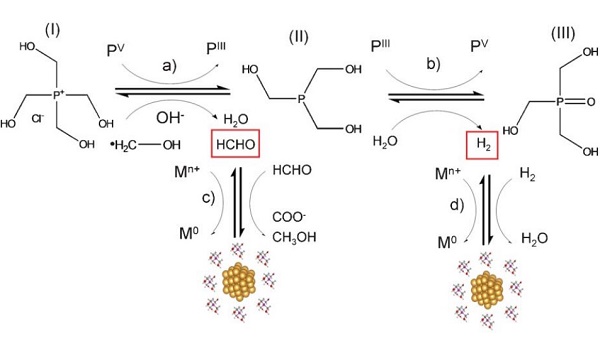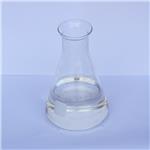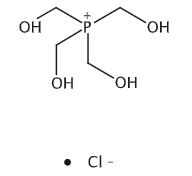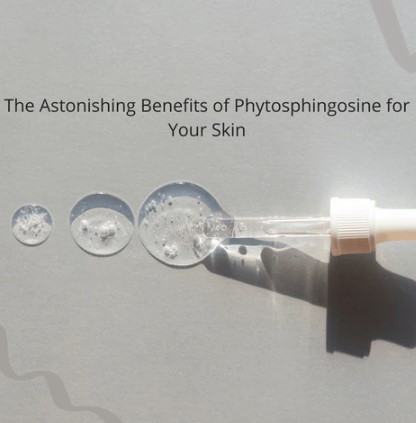The uses of Tetrakis (hydroxymethyl) Phosphonium Chloride
Description
Tetrakis (hydroxymethyl) Phosphonium Chloride (THPC) is a water-soluble organophosphorus salt with a chemical formula [P(CH2OH)4]Cl. THPC is formed by treating phosphine with formaldehyde in the presence of hydrogen chloride and is used as an ingredient in flame-retardant chemicals. It has been used by textile industries mainly for cotton and cellulose fabric as a flame retardant and crease-resistant material. However, from industrial discharges, trace amounts of THPC can be leached into surface and groundwater, leading to potential environmental hazards [1].
Uses
The use of tetrakis-(hydroxymethyl)-phosphonium chloride (THPC) as a simultaneous reducing agent and stabilizing ligand has been extended to the single-step synthesis at room temperature of a wide variety of monometallic nanoparticles and bi-/tri- metallic nanoalloys containing noble metals with potential application in catalysis[2]. With its participation in the synthesis of:

Synthesis of gold nanoparticles
For the synthesis of Au nanoparticles, 3.0 mg of HAuCl4 was added to 15 mL of distilled water in a glass vial under magnetic stirring. Afterwards, 333 mL of a 65 mM THPC solution was added. After several minutes, 165 mL of a 1 M NaOH solution was added to the glass vial. The reaction mixture was kept at room temperature for 4 days and wrapped in aluminum foil to prevent photothermal decomposition. The product was kept in a refrigerator until further characterization.
Synthesis of platinum nanoparticles
In a typical synthesis of Pt nanoparticles, 100 mL of HPtClO4 8wt% solution was added to 15 mL of distilled water in a glass vial under magnetic stirring. Meanwhile, 333 mL of a 65 mM THPC solution was added. After several minutes, 165 mL of a 1 M NaOH solution was added to the glass vial. The reaction mixture was kept at room temperature for 4 days and wrapped in aluminum foil to prevent photothermal decomposition. The product was kept in a refrigerator until further characterization.
These nanoparticles have a high potential for application in various catalytic processes.
THPC is a phosphonium salt precursor to fire-retardant materials readily available in aqueous solution. Tetrakis(hydroxymethyl) phosphonium chloride (THPC) could be introduced as an inexpensive, amine-reactive, aqueous cross-linker for 3D cell encapsulation in protein-based hydrogels. THPC cross-linking is not only cell-compatible but supports the retention of cell function[3].
References
[1] Simpo Rose Ogwang Akech , Arpita Saha, Olajumoke Harrison . “Removal of a potentially hazardous chemical, tetrakis (hydroxymethyl) phosphonium chloride from water using biochar as a medium of adsorption.” Environmental Technology & Innovation 12 (2018): Pages 196-210.
[2] Hueso, José L. et al. “Beyond gold: rediscovering tetrakis-(hydroxymethyl)-phosphonium chloride (THPC) as an effective agent for the synthesis of ultra-small noble metal nanoparticles and Pt-containing nanoalloys†.” RSC Advances 26 (2013): 10427–10433.
[3] Cindy Chung, Sarah C. Heilshorn*, & Kyle J. Lampe. “Tetrakis(hydroxymethyl) Phosphonium Chloride as a Covalent Cross-Linking Agent for Cell Encapsulation within Protein-Based Hydrogels.” Biomacromolecules 13 12 (2012): 3912–3916.
Related articles And Qustion
See also
Lastest Price from Tetrakis(hydroxymethyl)phosphonium chloride manufacturers

US $1.00-4.00/KG2025-05-14
- CAS:
- 124-64-1
- Min. Order:
- 1KG
- Purity:
- 99%
- Supply Ability:
- 200000KG

US $0.00-0.00/KG2025-04-15
- CAS:
- 124-64-1
- Min. Order:
- 1KG
- Purity:
- 99%
- Supply Ability:
- 500000kg




